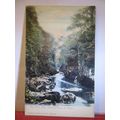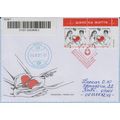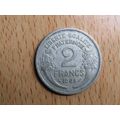Wyspianski, Stanislaw - Portrait of Two Girls - Polish art postcard
- Condition : Used
- Dispatch : 2 Days
- Brand : None
- ID# : 137777533
- Quantity : 1 item
- Views : 207
- Location : United Kingdom

- Seller : justthebook (+1703)
- Barcode : None
- Start : Mon 16 Mar 2015 22:56:30 (BST)
- Close : Run Until Sold
- Remain : Run Until Sold
More Listings from This Seller view all
Seller's Description
- Art Postcard
- Work of art title: Portret Dwoch Dziewczynek [Portrait of Two Girls]
- Artist (if known): Stanislow Wyspianski (1869-1907)
- Media or other details: pastel
- Publisher / Gallery: Museum Gornosplaskie w Bytomiu
- Postally used: no
- Stamp & postmark details (if relevant): na
- Size: modern
- Notes & condition details:
NOTES:
Size: 'Modern' is usually around 6in x 4in / 'Old Standard' is usually around 5 1/2in x 3 1/2in. Larger sizes mentioned, but if you need to know the exact size please ask.
All postcards are not totally new and are pre-owned. It's inevitable that older cards may show signs of ageing and use, particularly sent through the post. Any faults other than normal ageing are noted.
Stock No.: A543
------------------------------------------------
Postage & Packing:
Postage and packing charge should be showing for your location (contact if not sure).
No additional charges for more than one postcard. You can buy as many postcards from me as you like and you will just pay the fee above once. Please wait for combined invoice. (If buying postcards with other things such as books, please contact or wait for invoice before paying).
Payment Methods:
UK - PayPal, Cheque (from UK bank) or postal order
Outside UK: PayPal ONLY (unless otherwise stated) please. NO non-UK currency checks or money orders (sorry).
NOTE: All postcards are sent in brand new stiffened envelopes which I have bought for the task. These are specially made to protect postcards and you may be able to re-use them. In addition there are other costs to sending so the above charge is not just for the stamp!
I will give a full refund if you are not fully satisfied with the postcard.
----------------------------------------------
Text from the free encyclopedia WIKIPEDIA may appear below to give a little background information:
*************
Stanislaw Wyspianski (pronounced ['sta'?iswaf v?'spja?sk?i]; 15 January 1869 – 28 November 1907) was a Polish playwright, painter and poet, as well as interior and furniture designer. A patriotic writer, he created a series of symbolic, national dramas within the artistic philosophy of the Young Poland Movement. Wyspianski was one of the most outstanding and multifaceted artists of his time in Poland under the foreign partitions.[1] He successfully joined the trends of modernism with themes of the Polish folk tradition and Romantic history. Unofficially, he came to be known as the Fourth Polish Bard (in addition to the earlier Three Bards: Adam Mickiewicz, Juliusz Slowacki, and Zygmunt Krasinski).
Stanislaw Wyspianski was born to Franciszek Wyspianski and Maria Rogowska. His father, a sculptor, owned an atelier on Wawel Hill. His mother died of tuberculosis in 1876 when Stanislaw was seven years old. Due to problems with alcohol, Stanislaw's father could not fulfil his parental responsibilities. Stanislaw was adopted by his aunt Joanna Stankiewiczowa and her husband Kazimierz. The Stankiewicz family belonged to a bourgeois intellectual class. In their house, Wyspianski became acquainted with painter Jan Matejko, who was a frequent visitor. Matejko soon recognized that the boy had artistic talent and gave him his first artistic guidance. Wyspianski attended Saint Anne's Secondary. The school was unique for several reasons. Firstly, although the Polish language was forbidden in educational institutions under foreign rule, the lectures in Saint Anne's Gymnasium were delivered in Polish. Secondly, the teacher's goal was to equip the students with a thorough knowledge of Polish history andliterature. Thirdly, graduates of the school, including Lucjan Rydel, Stanislaw Estreicher and Henryk Opienski, were considered prominent figures in Kraków's cultural life. As a student, Wyspianski took particular interest in art and literature. According to Joanna Stankiewiczowa, a young Stanislaw portrayed small cottages, animals, plants, armors and decorations. Wyspianski also created a dramatic interpretation of Matejko's painting Stefan Batory pod Pskowem (Bathory at Pskov).
In 1887 Wyspianski enrolled in the Philosophy Department at the Jagiellonian University and the School of Fine Arts in Kraków. While studying at the University, he attended lectures in art, history and literature. Jan Matejko, the dean of the School of Fine Arts soon recognized Wyspianski's talent and asked him to join in the creation of a polychrome inside the Mariacki Church.
The years 1890–1895 were devoted to traveling. Wyspianski visited Italy, Switzerland, Germany, Prague and France. His stay in France is regarded to have been a major point in his artistic life. He studied at the private Académie Colarossi. Since the school fee was very high, Wyspianski applied for a grant. During his stay in France he got acquainted withPaul Gauguin. Together they visited art museums, where Wyspianski was bewitched by the beauty of Pierre Puvis de Chavannes's paintings. He also attended theatre performances based on Shakespeare's and classical era plays. His future dramas: Daniel i Meleager (Daniel and Meleagra) and Powrót Odysa (Return of Odysseus) were based on the antic tradition. Meanwhile, he worked on several dramas Królowa Polskiej Korony (The Queen of Polish Crown), Warszawianka (Varsovian Anthem) and the first version ofLegenda (Legend). The play Legenda (Legend) was based on the famous Polish legend about Wars and Sawa. In August 1894 he returned to Kraków, where he got involved in the modernist movement. It was then he designed and partially made a polychrome for the Franciscan Church that was composed of flowery, geometrical and heraldic motifs. Moreover, the prior of the church encouraged Wyspianski to design various stained glass windows such as Blessed Salomea, Saint Francis Stigmata and God the Father. It is worth mentioning that Wyspianski received an award from the Polish Academy of Learning for the landscape of the Kopiec Kosciuszki (Kosciuszko Mound). As a painter, interior designer and poet he cooperated with the Town Theatre in Kraków. First he designed furniture and scenography for the theatre performances, then he staged various dramas on the stage of the theatre.
He cooperated with the Kraków Society of Friends of Fine Art and in mid-1898 was nominated art manager of the weekly Zycie (Life). Unfortunately, his first published dramasLegenda (Legend), (1897) and Daniel i Meleager (Daniel and Meleagra), (1898) did not receive the acclaim of the critics. It was the Warszawianka (Varsovian Anthem) that brought instantaneous acclaim to its author. The premiere of the drama marked his debut as a playwright of national dramas. The theatre premiere of the drama on 2 July 1901 starred Helena Modrzejewska as Maria. The years 1899–1900 marked the publication of Protesilas i Laodamia (Protesilas and Laodamia), Lelewel (Lelevel) and Legion. This drama is regarded to be the author's polemic displaying a romantic vision of history. In 1900, Wyspianski married the mother of his four children Teodora Pytko. In November the same year he participated in the wedding of his friend Lucjan Rydel in Bronowice, a village near Kraków. The wedding party was an inspiration for his well acclaimed play Wesele (The Wedding). It is a deeply critical yet sarcastic expose on Polish society of 19th century. ""Wesele"" transformed Wyspianski from a moderately successful visual and verbal artist associated with the Young Poland movement into a national dramatist-visionary whose significance in Poland is comparable to Yeats's in Ireland, O'Neill's in America, or Maeterlinck's in Belgium.""[2] The drama made references to the contemporary situation in Poland, and showed a picture of a powerless society. Although censorship barred the sale of copies of Wesele (The Wedding), the play was staged in the theatre.
After the success of Wesele (The Wedding) four new plays based on Polish history were published Wyzwolenie (Liberation), Achilles, Boleslaw Smialy (Boleslaus The Bold) and Legenda II (Legend 2). Next years were devoted to publishing of Skalka and Powrót Odysa (Return of Odysseus), meanwhile Wyspianski translated Corneillea's Cyd (Le Cid) and Voltaire's Zaïre.
In 1906 Wyspianski became professor of the Academy of Fine Arts in Kraków, he was also a member of the City Council. In his last years the condition of Wyspianski's health deteriorated. As a result, he underwent medical treatments in Rymanów and Bad Hall and then settled in his small cottage in the village of Wegrzce. He died of syphilis which was incurable at the time. His funeral took place in Kraków and became a national day of mourning. Wyspianski was buried in the Crypt of the Distinguished in the Skalka Church.
type=printed postcards
theme=artists signed
sub-theme=art
number of items=single
period=1945 - present
postage condition=unposted
Listing Information
| Listing Type | Gallery Listing |
| Listing ID# | 137777533 |
| Start Time | Mon 16 Mar 2015 22:56:30 (BST) |
| Close Time | Run Until Sold |
| Starting Bid | Fixed Price (no bidding) |
| Item Condition | Used |
| Bids | 0 |
| Views | 207 |
| Dispatch Time | 2 Days |
| Quantity | 1 |
| Location | United Kingdom |
| Auto Extend | No |



 for 1 item(s)
for 1 item(s)

















